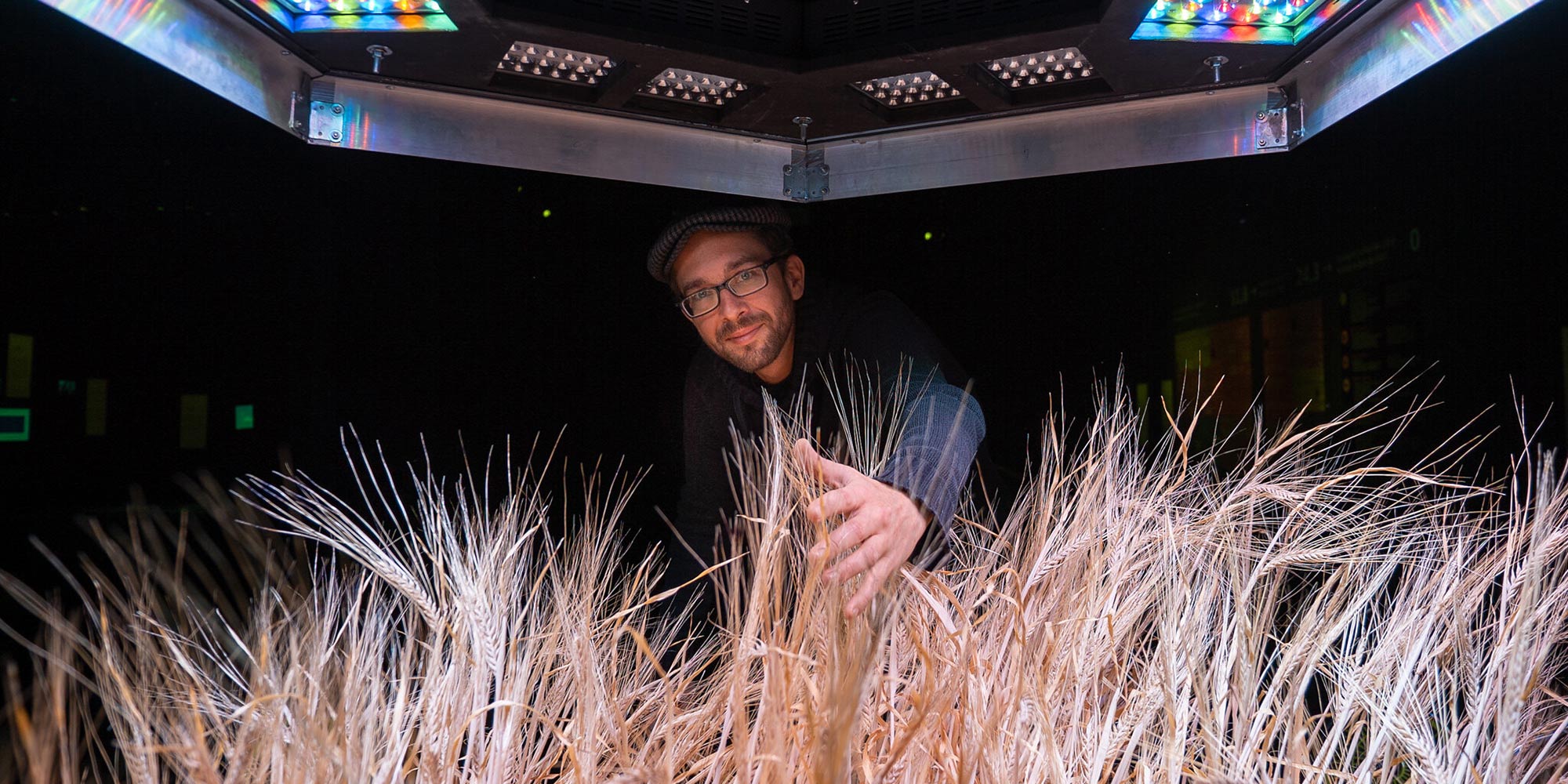We couldn’t have picked a nicer day for our harvest: it’s December, the smell of snow is in the air, the ice is crunching under our shoes, and the rays of the low winter sun fall on the frozen ground. And we don’t notice any of this here in the middle of the windowless exhibition area of the Ars Electronica Center.
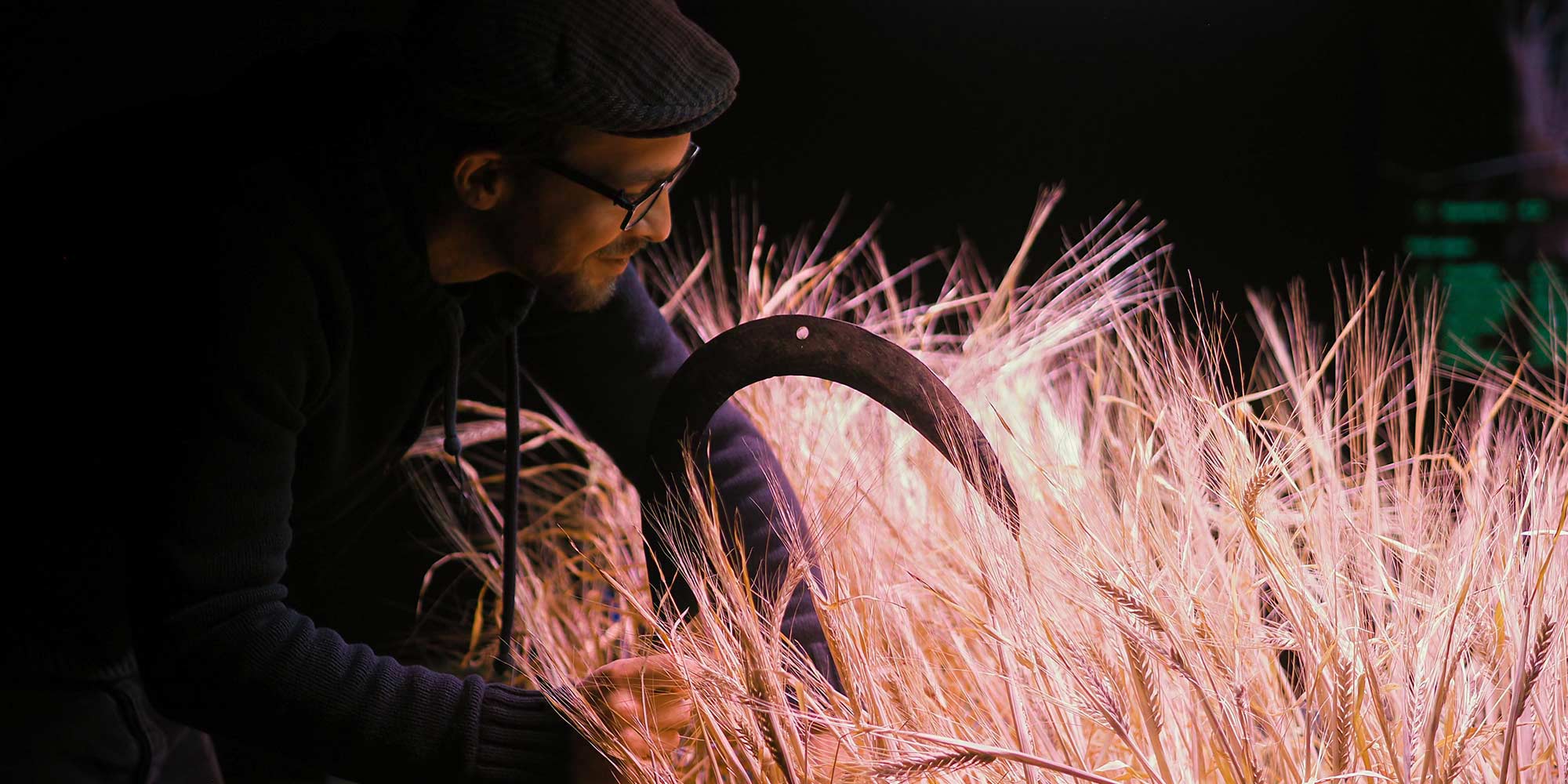

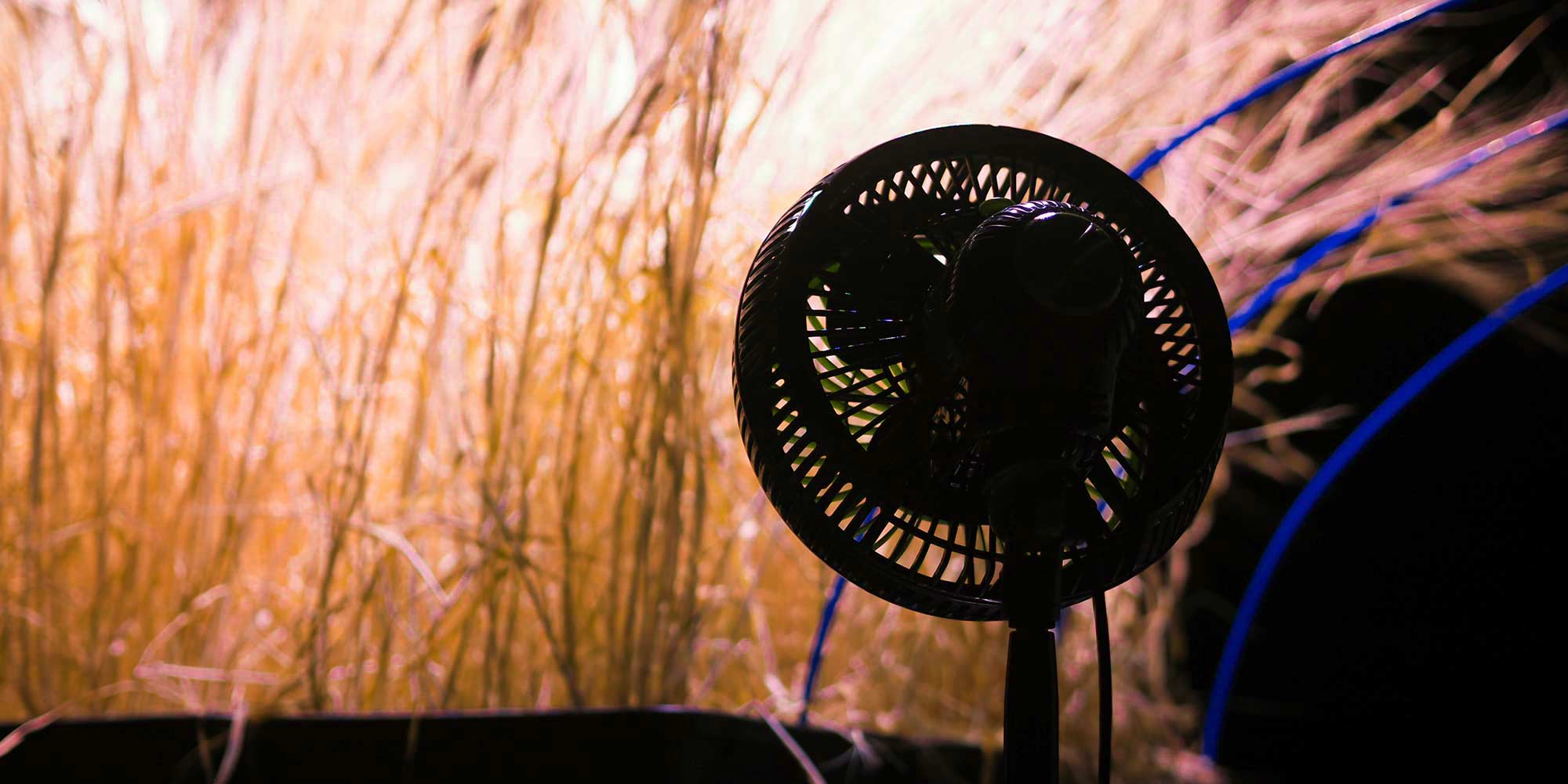

Barley is one of the first grains that we humans grew ourselves. It has relatively low requirements when it comes to growing. Although the many ingredients benefit our health, the grain has nowadays somewhat taken a back seat.
It’s harvest time! There were almost no dry periods in the museum, the precipitation or rather watering was balanced, as was the room temperature. No cloud was placed in front of the energy yielding UV light in the past three months.
We met with infotrainer Philipp Gartlehner a few days before Christmas here in the exhibition “There is no Planet B!” to harvest our one square meter barley field. He also took his grandfather’s sickle to do it.

They have grown beautifully, the stalks of grain about a meter high with their symmetrically arranged golden-yellow spikes, on which the barley grains sit.
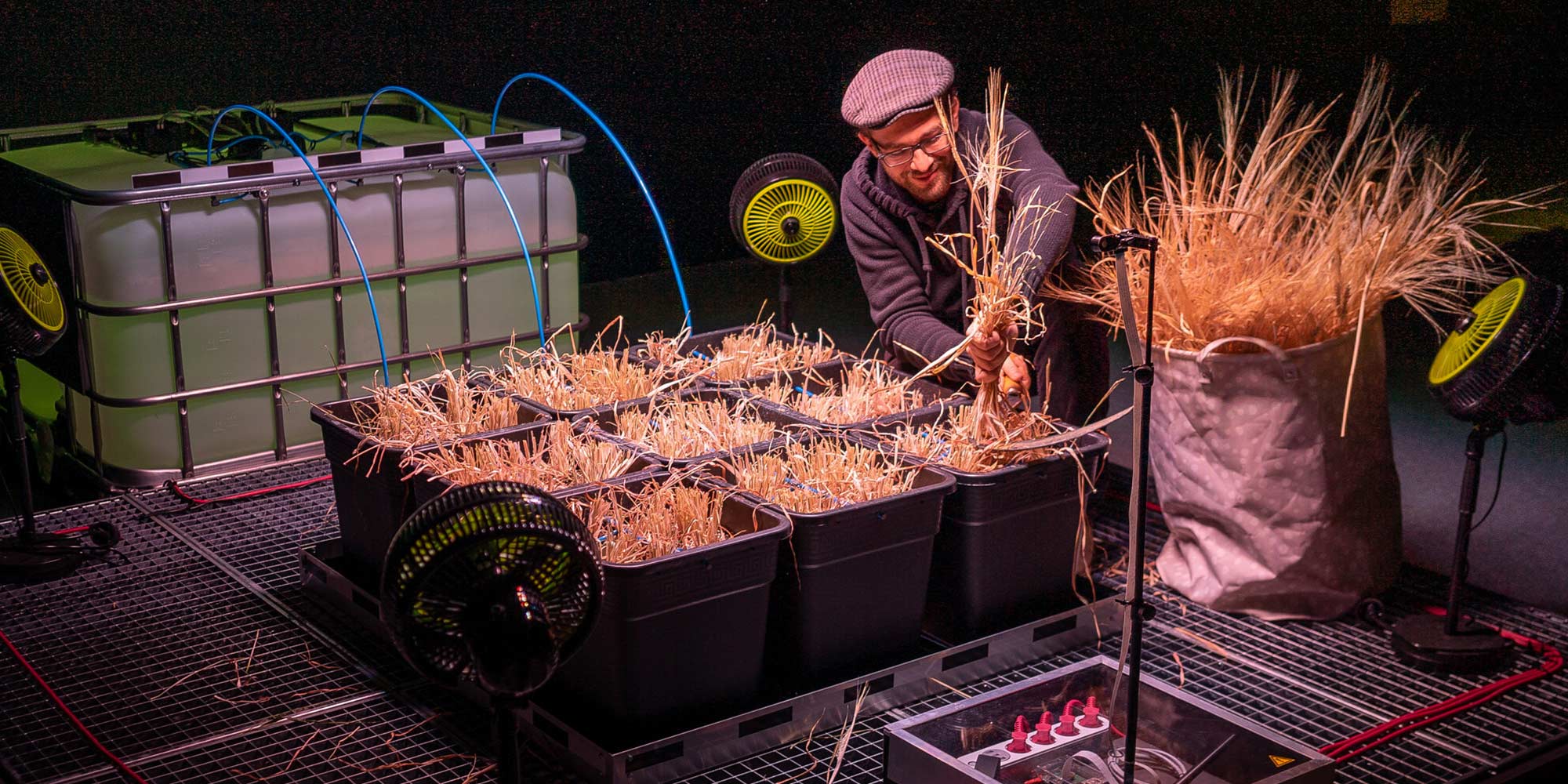
This barley field, which is divided into several flower pots and positioned in the middle of the dark room, is quite manageable. It was conceived by the DISNOVATION.ORG & Baruch Gottlieb, the media artist who came up with the idea. Thanks to artificial light, artificial watering, artificial heating, artificial wind and nutrients, the “Life Support System” has been kept alive for the past three months.


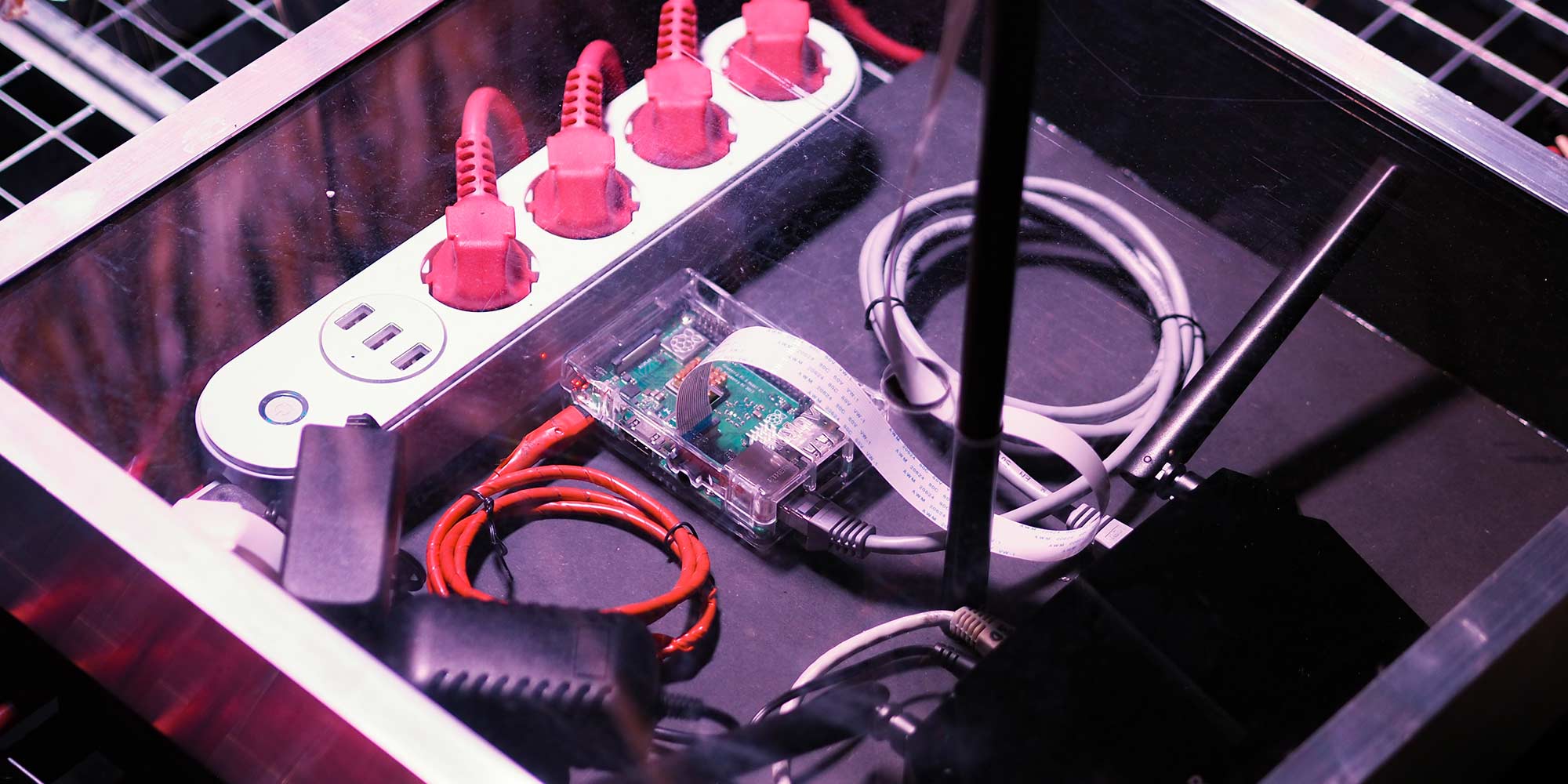

Philipp was already involved when the field was cultivated in September, and since then has kept an eye on the plant several times a week, which is basically designed to supply the necessary amounts of energy to the plants itself. His expertise from the time before Ars Electronica, LED lighting in the field of horticulture, has naturally also helped him in caring for the plants.

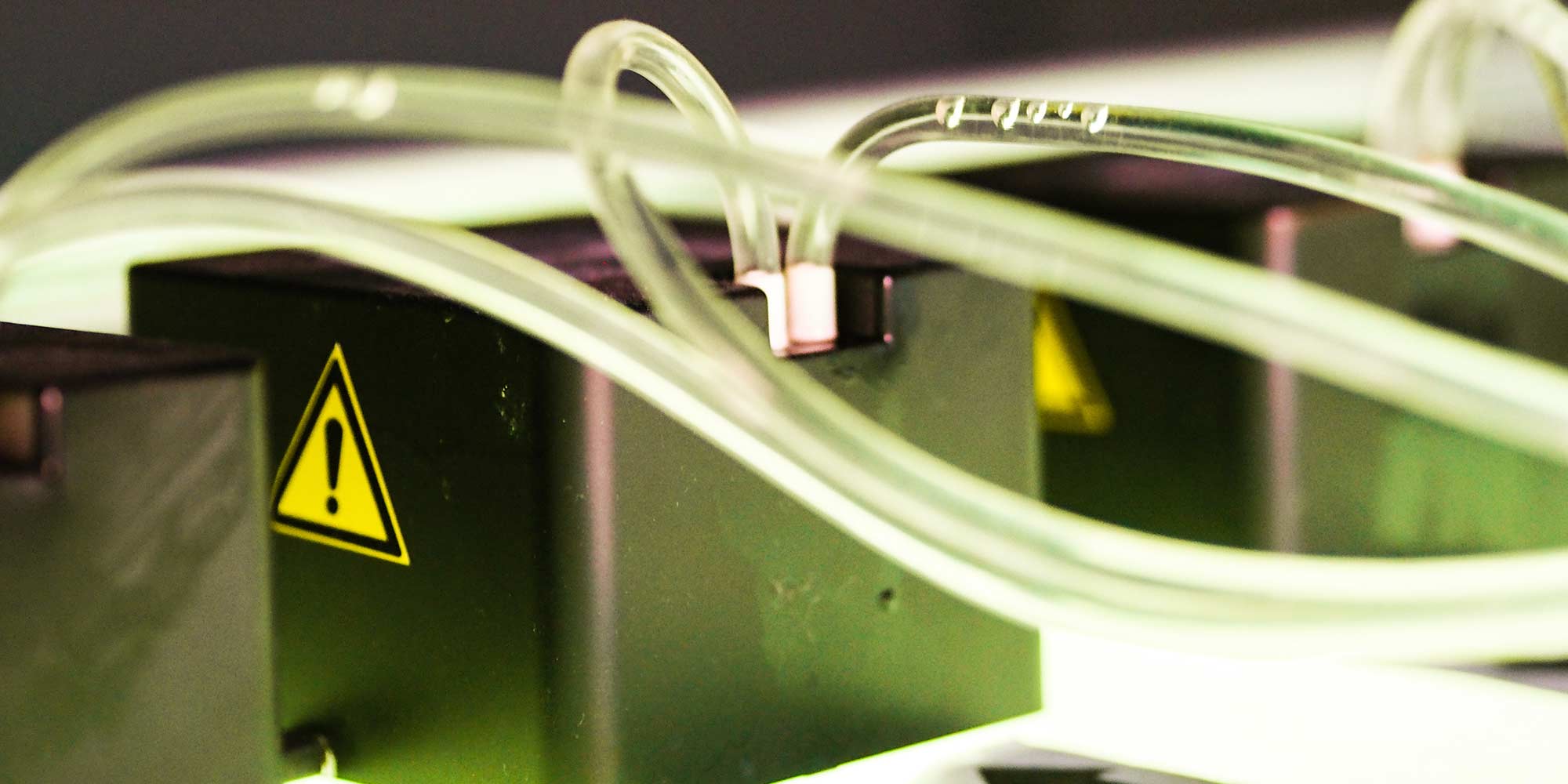

The LEDs on the ceiling provide the barley with the necessary UV light. The indispensable water reaches the pots from the huge canister by means of small pumps in several plastic tubes. Four fans supply the barley with wind. With wind? Yes, even the wind has its importance in this experimental setup – without it, the stalks would be too weak to carry the full spike at the end and not bend over.
A webcam tracks the growth of the barley in fast motion. Additional information of this project is broken down on the screen:
- We used 1,400 kWh of electrical power for this harvest. That’s about 230 euros that this one square meter of barley cost us, even though we actually used energy-saving technology for it.
- 300 liters of water were poured from September to December, some of which evaporated through the air, of course.
- The hardware cost us over 2,000 euros, and we will probably be able to use it for another five years.



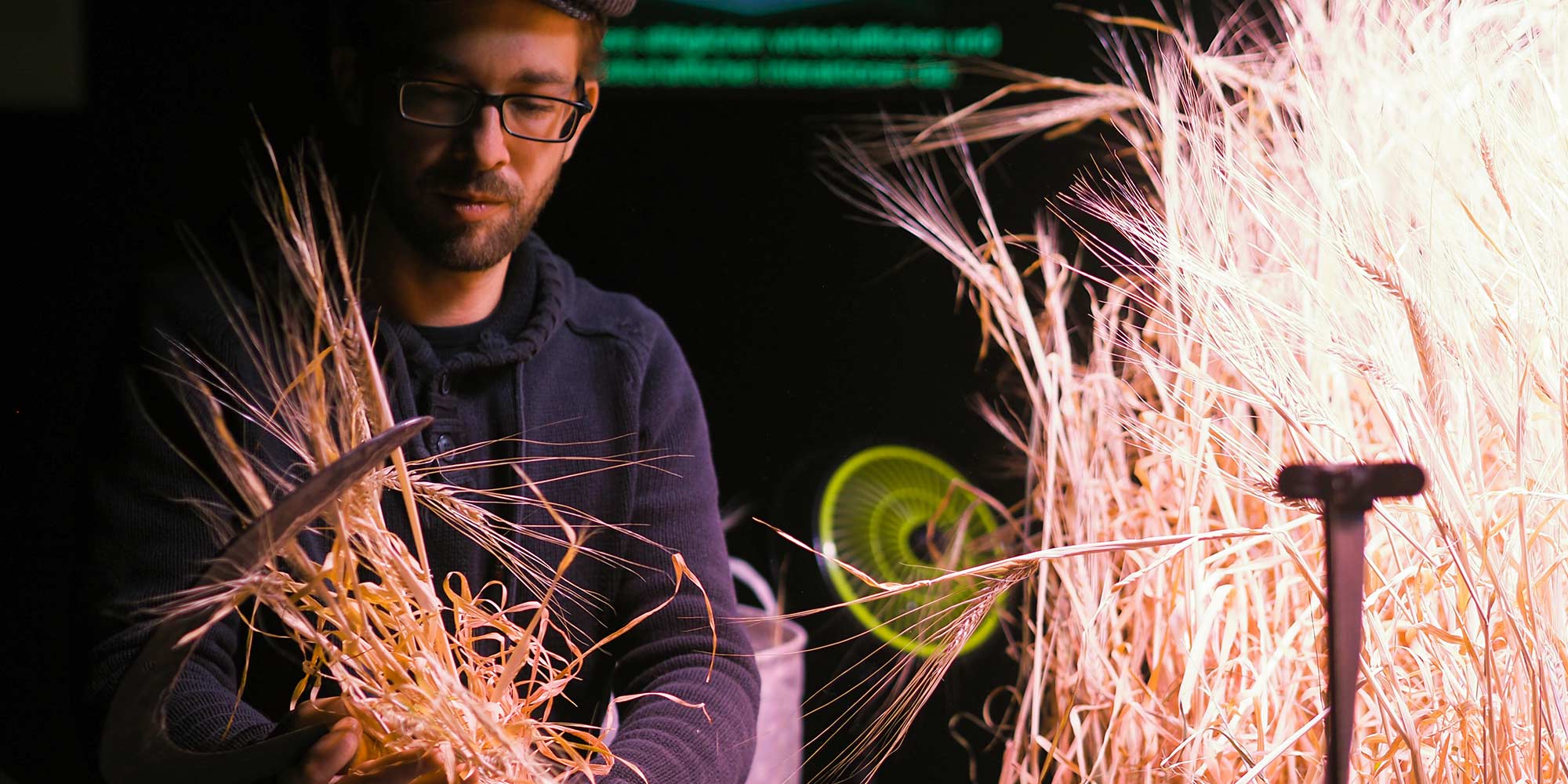
All together, this harvest has cost us more than 430 euros. However, we can not yet bake a bread from it, or even brew a drink. To do this, we would have to literally “separate the wheat from the chaff”, grind the barley into flour, but the working time for all the handicrafts is still not included.

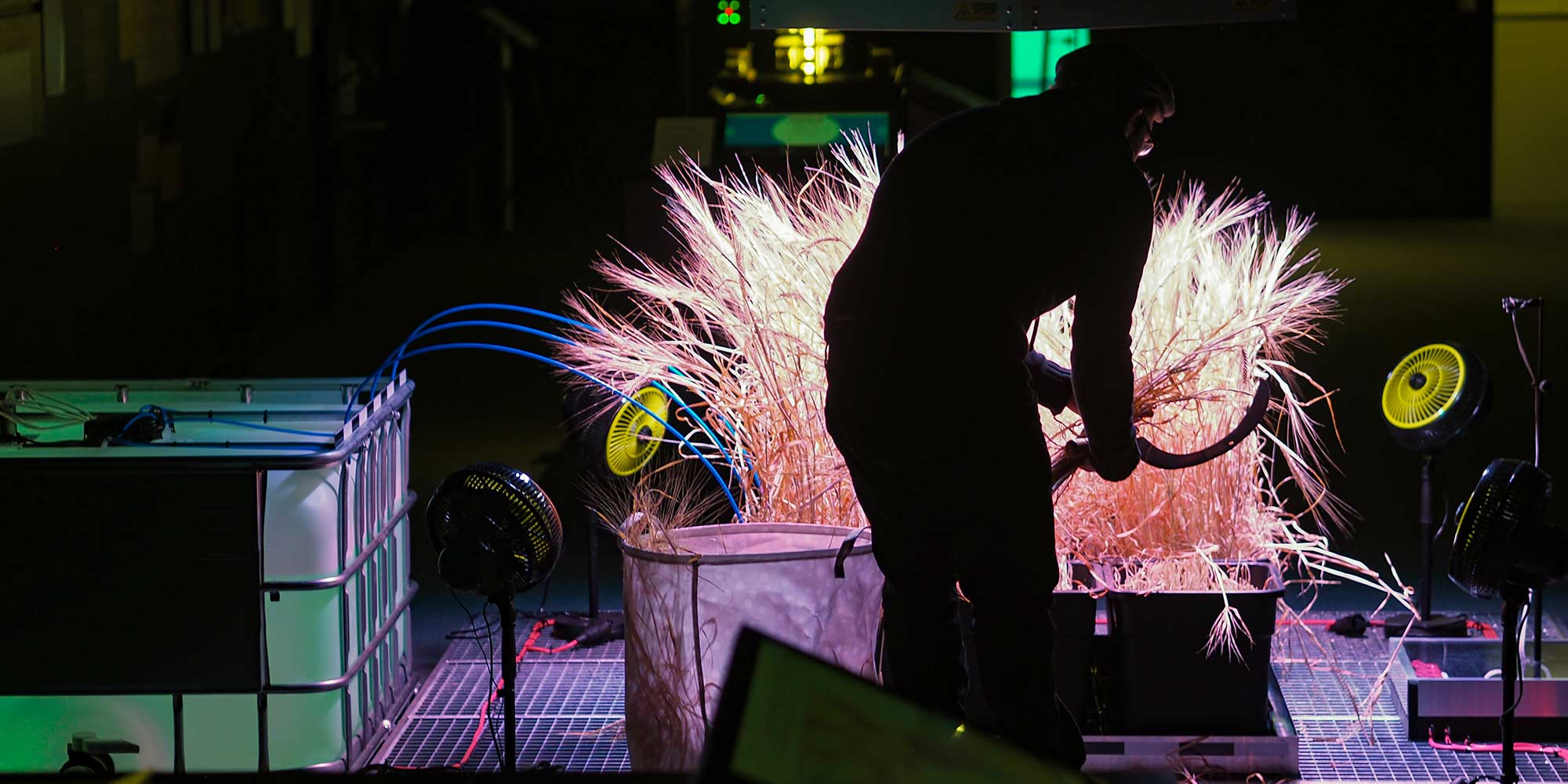
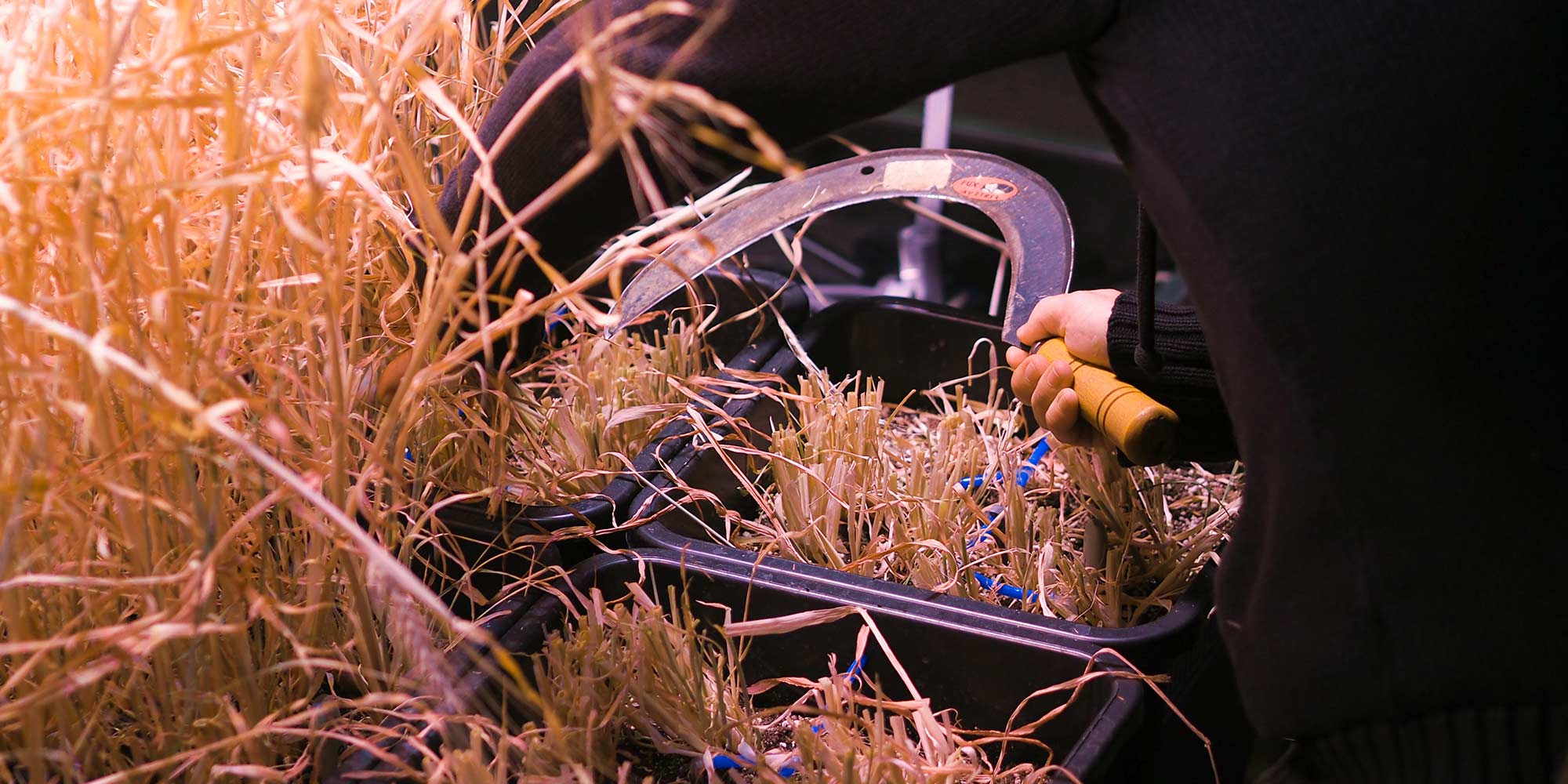
However, the “Life Support System” gives us a tremendous food for thought and lets us appreciate the scale of the service that our ecosystem provides for us without doing anything. We quickly realize that we should be more concerned about protecting nature “out there” rather than putting costly energy into something that doesn’t pay off economically in any way.
This plant has grown up without ever having been in nature. It has survived because humans and computers have taken care of it around the clock.
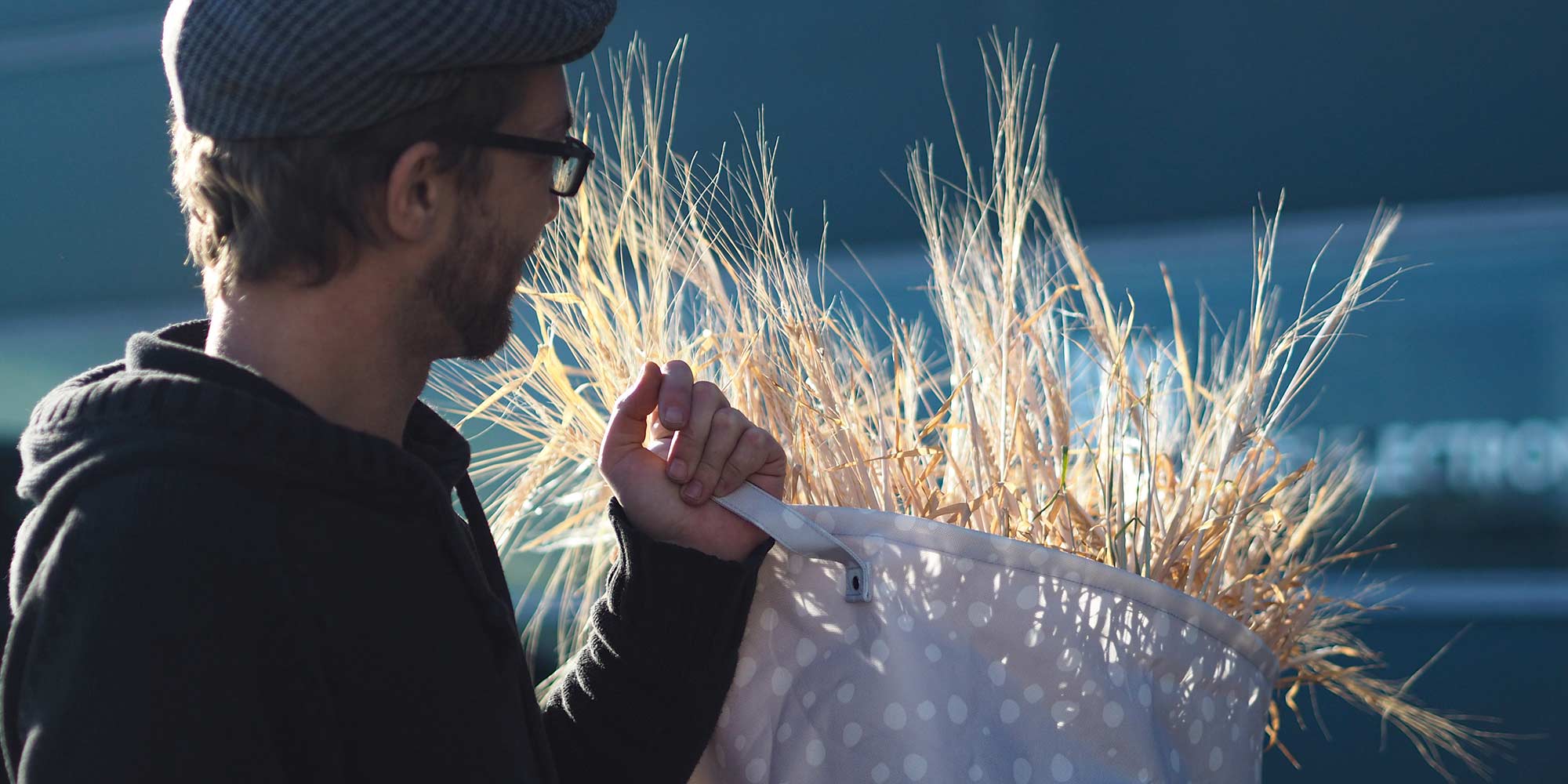

With this one harvest of one square meter of barley, which is no more than 800 grams, an adult human being can meet her or his caloric needs for a single day. Every 3.5 months we can harvest this one square meter, because growing and thriving also takes time.
A little more than three days a year, this square meter would have fed a single person if she or he had spent about 1,000 euros on it. Is it really worth the effort?
